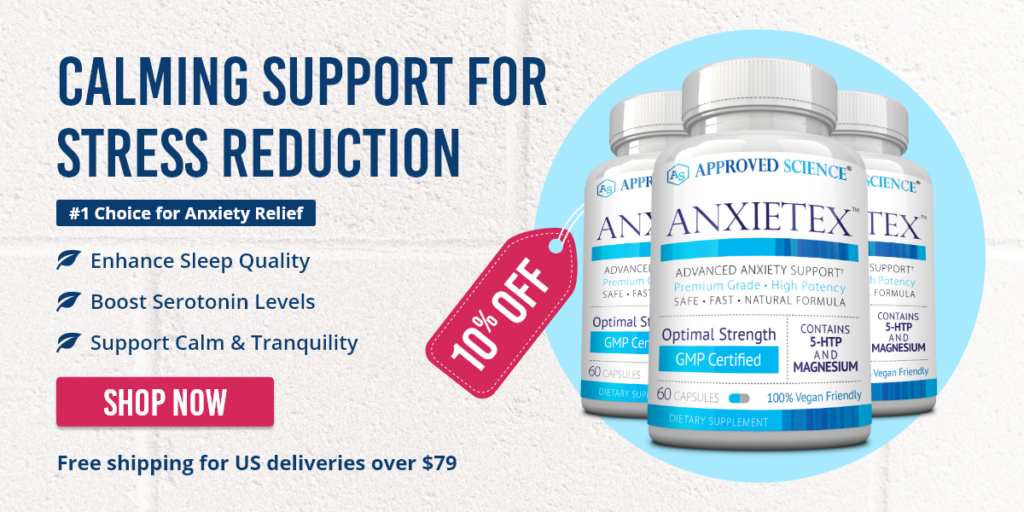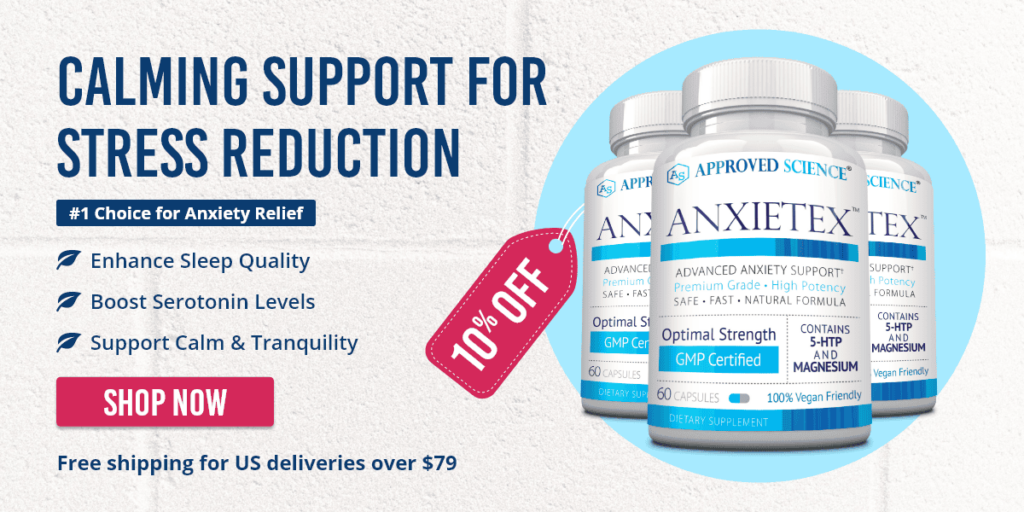Have you ever been caught in the torrent of anxiety, with its relentless waves making it feel nearly impossible to stay afloat? If you’ve experienced this, you’re not alone. Anxiety can feel overwhelming, but take heart: one of the most effective tools against it lies right under your nose. Yes, we’re talking about breathing! In this post, we’ll delve into anxiety, how breathing can help alleviate it, and discuss several effective anxiety breathing techniques.
Understanding Anxiety And The Role of Breathing
Anxiety is a natural response to stress, characterized by feelings of fear, worry, or unease. It’s a part of our body’s “fight-or-flight” response system, which helps us deal with threats. While occasional anxiety is a normal part of life, frequent or severe anxiety can affect our health and well-being, leading to a dysregulated nervous system and an anxiety disorder.
When we’re anxious, our breathing can become shallow and rapid, a response stemming from our primal instincts to either fight or flee. However, this type of breathing can increase feelings of fear and anxiety, creating a vicious cycle. The good news is that by consciously altering our breathing pattern, we can break this cycle, promoting relaxation and reducing anxiety levels.
The Foundation Of Breathing Techniques: Diaphragmatic Breathing
Diaphragmatic breathing or “belly breathing” engages your diaphragm, the muscle that sits beneath your lungs. When your diaphragm contracts, it causes your lungs to take in air. Conversely, diaphragm relaxation causes exhalation. The degree to which the diaphragm contracts influences how deeply you breathe.
The term “diaphragmic breathing” refers to breathing that fully engages the stomach, abdominal muscles, and diaphragm when breathing. This type of breathing can help you stay calm and centered, reduce your stress levels, and provide a strong foundation for the breathing exercises we’ll discuss next.
To practice diaphragmatic breathing:
- Sit or lie down comfortably, placing one hand on your belly and the other on your chest.
- Inhale slowly and deeply through your nose, allowing your belly to rise as it fills with air.
- Exhale slowly through your mouth or nose, letting your belly fall.
- Practice this for a few minutes, focusing on the rise and fall of your belly. Try to keep your exhale longer than your inhale as this will help lower your heartrate and decrease feelings of stress.
Anxiety-Busting Breathing Techniques
Now that we’ve covered the basics, let’s explore specific breathing techniques that can help alleviate anxiety. We will explore the 4-7-8 method, box breathing, cyclic sighing, alternate nostril breathing, and the Wim Hof method.
The 4-7-8 Method:
This technique helps to slow your breathing, reducing anxiety and promoting sleep. A study published in Physiological Reports found that the 4-7-8 method lowered heart rate and blood pressure, and improved heart rate variability which indicates reduced stress (1).
To practice the 4-7-8 Method:
- Inhale quietly through the nose for a count of 4.
- Hold the breath for a count of 7.
- Exhale forcefully through the mouth, pursing the lips and making a “whoosh” sound, for a count of 8.
- This completes one breath. Now inhale again, and repeat the cycle three or more times for a minimum of four breaths.

The 4-4-4 Method (Box Breathing):
Box breathing, also known as the 4-4-4 method, is another powerful anxiety management tool that promotes relaxation and focus. Research indicates that box breathing can reduce stress and enhance mood (2).
To practice Box Breathing:
- Inhale slowly and deeply through your nose for 4 seconds.
- Hold your breath for 4 seconds.
- Exhale slowly through your mouth for 4 seconds.
- Hold your breath for another 4 seconds.
- Repeat the process for several minutes.
>>>Enhance your journey to calmness with the power of Anxietex™ at a discounted price!
Cyclic Sighing:
Cyclic sighing is the practice of fully filling and emptying the lungs while in a relaxed position of either sitting or laying down. A study in Cell Reports Medicine found this technique to be more effective for improving mood and reducing respiratory rate than mindful meditation (2). Based on this study, practicing Cyclic Sighing for 5 minutes a day may be effective for reducing anxiety.
To practice Cyclic Sighing:
- Inhale slowly until your lungs are expanded
- Inhale once again to fully fill your lungs (this inhalation will likely be shorter than the first)
- Slowly and fully exhale the air from your lungs
- Repeat this pattern for 5 minutes
Alternate Nostril Breathing:
A technique popular in yoga, alternate nostril breathing has been shown to improve parasympathetic tone, meaning that it helps the PNS to be more effective at calming the body and mind (3).
To practice Alternate Nostril Breathing:
- Close your right nostril with your right thumb and inhale slowly through the left nostril.
- Close your left nostril with your right ring finger so both nostrils are held closed; retain your breath at the top of the inhalation for a brief pause.
- Open your right nostril and exhale slowly through the right nostril.
- Keeping the left nostril closed, inhale through the right nostril, then close the right nostril and pause at the peak of the inhalation.
- Open the left nostril and exhale through the left side. This completes one cycle.
- Repeat for up to five minutes.
The Wim Hof Method:
This technique combines controlled hyperventilation, breath retention, and meditation. Research has shown that the Wim Hof Method can positively influence the autonomic nervous system, oxygen utilization, and immune response, helping to manage stress (4). The full Wim Hof Method combines breathwork, meditation, and cold exposure therapy and will likely have better results than breathwork alone (5).
To practice the Wim Hof Method:
- Lie down or sit in a comfortable position, ensuring you cannot fall or hurt yourself.
- Inhale deeply through the mouth or nose, filling the lungs completely.
- Exhale gently and without force, letting about 70% of the air out.
- Continue the deep inhale and gentle exhale for about 30-40 cycles.
- After the last exhale, hold your breath (with lungs empty) for as long as you comfortably can. Aim for at least a minute or until you feel a strong urge to breathe.
- Take a deep breath in and hold it for 15 seconds.
- Release the breath.
- The entire process can be repeated for 2-3 more rounds if desired.
- Once you’ve finished, take a moment to sit or lie still, tuning into any sensations in your body and grounding yourself.
*Please note that some breathing techniques may be difficult. Do not push yourself as you can always build up to a breathing pattern with time and practice. These techniques are intended to help you achieve a less anxious state of being; however, if these breathing techniques stress you out, take things slowly, consult with your health advisor, and explore other anti-anxiety options.
Additional Tips For Managing Anxiety
Breathing techniques can be a powerful tool for managing anxiety, but they are even more effective when combined with other stress management strategies, including:
- Exercise Regularly: Physical activity stimulates the production of endorphins, chemicals in the brain that act as natural painkillers and mood elevators.
- Prioritize Sleep Hygiene: Prioritizing good sleep is essential for managing anxiety. Studies have shown that lack of sleep can exacerbate feelings of stress and anxiety. To improve sleep hygiene, establish a regular sleep schedule, create a bedtime routine, and make your bedroom conducive to sleep by reducing light and noise.
- Eat A Healthy Diet: Consuming a balanced diet can play a role in how we feel. Reducing the intake of caffeine and sugar can help mitigate feelings of anxiety. Foods rich in magnesium, zinc, and vitamin B are known to be mood stabilizers. Omega-3 fatty acids, found in fish like salmon, have also been linked to reduced anxiety symptoms in some studies.
- Take A Supplement: There are several ingredients that have been researched for their potential benefits in managing anxiety. Some potential ingredients include Ashwagandha, Siberian Ginseng, Valerian Root, Magnesium, and more.
- Decrease Alcohol and Caffeine: Both can provoke panic attacks in some people. Decreasing or eliminating consumption can help reduce anxiety symptoms in some individuals.
- Seeking Professional Help: If anxiety is affecting daily life, it’s crucial to seek professional help. Therapies such as cognitive-behavioral therapy (CBT) can provide tools and strategies to cope.
>>>Learn more about anti-anxiety herbs and how they can help your situation!
Your Takeaway
In conclusion, managing anxiety is a holistic process that might require a combination of breathing techniques, lifestyle changes, and possibly professional intervention. Experimenting with different strategies and finding what works best for you is the key. Your options include 4-7-8 breathing, box breathing, cyclic sighing, the Wim Hof Method, and more. When it comes to managing your anxiety, there are some factors you can control and you can make a difference. Remember, it’s essential to consult with healthcare professionals regarding any significant changes to your health regimen.



